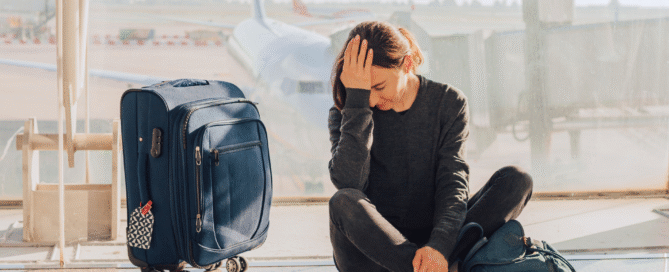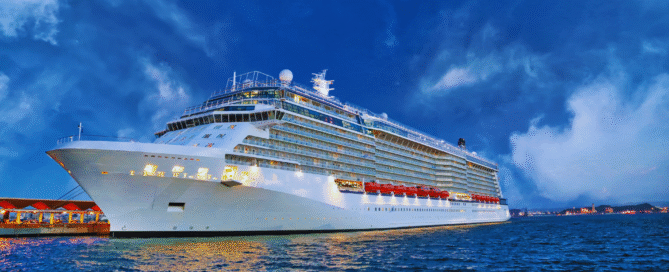What to Do If You Miss Your Flight: Essential Steps to Take Immediately
Missing a flight can be a frustrating experience, but knowing the steps to take can make it easier to navigate. Contact the airline immediately to discuss options for rebooking and any possible fees. Many airlines offer flexibility, especially if the cancellation or delay is their fault.
Travelers often face different scenarios when they miss a flight, from arriving late due to traffic to delays at security. Each situation may require a different approach. Understanding the airline’s policy on missed flights can save time and reduce stress.
In addition to contacting the airline, passengers should check for alternative flights or consider nearby airports. Being proactive can sometimes lead to finding a solution faster than expected. By staying calm and organized, the traveler can regain control over their travel plans.
Immediate Actions After Missing Your Flight
Missing a flight can be stressful, but knowing the right steps to take can ease the situation. Immediate actions include contacting customer service, reaching out to airline agents at the airport, utilizing airline apps, and understanding relevant policies.
Contacting Customer Service
The first action to take is to contact the airline’s customer service. This can often be done through the hotline provided on the airline’s website. When calling, it is crucial to have your booking number and personal information ready.
Many airlines offer chat services via their websites or apps. This can reduce wait times. Customer service representatives can assist with rebooking options and informing travelers about any available fees.
If traveling with a group, it is often beneficial for one person to contact customer service for streamlined communication.
Approaching the Airline Agent at the Airport
If at the airport, approaching an airline agent is an effective option. Airline representatives are usually stationed at check-in counters or help desks. Presenting your boarding pass and identification will help them assist you promptly.
Agents can evaluate your situation and provide options for rebooking. They may also offer alternative flights to your destination on the same day if available. In-person assistance can expedite the process and offer immediate solutions.
Make sure to remain courteous. A positive attitude can sometimes lead to better assistance from the agent.
Using Airline Apps and Google Flights
Airline apps are valuable tools after missing a flight. Users can check for flight statuses, rebooking options, and other pertinent information. Many apps allow for instant rebooking, which can save time.
Google Flights is another resource. Users can quickly search for available flights and compare prices. Entering departure and arrival information can yield immediate flight options.
Utilizing these digital resources can streamline the rebooking process and reduce the need for long waits.
Understanding No-Show and Same-Day Standby Policies
It is important to familiarize oneself with no-show and same-day standby policies. A no-show typically means the traveler forfeits their ticket and may incur additional charges for rebooking. Policies vary by airline, so checking the specific terms is essential.
Same-day standby allows travelers to wait for any available seats on later flights. This option is often not guaranteed, but it can be a viable route for those who missed their initial flight.
Understanding these policies can help travelers navigate their options effectively after missing their flight.
Rebooking Options and Associated Costs
When a flight is missed, travelers have various rebooking options available, each associated with different costs. Understanding how to navigate these options effectively can minimize additional expenses and stress.
How to Rebook a Missed Flight
Passengers should first contact their airline as soon as they realize they’ve missed their flight. This can often be done through a mobile app, website, or customer service phone line. If the missed flight was caused by a delay from the airline, they typically allow for a no-cost rebooking.
For those who missed their flight for personal reasons, the rebooking process may involve a fee. Airlines usually provide options for rebooking or placing travelers on standby. Additionally, reviewing the airline’s policies can offer further insight into possible last-minute flights.
Rebooking Fees and Same-Day Change Policies
Rebooking fees vary significantly by airline and ticket type. Travelers with flexible tickets might avoid fees altogether. Basic economy tickets usually incur higher rebooking costs.
Some airlines offer same-day change policies, allowing passengers to rebook on a different flight that same day, often with reduced or waived fees. Generally, this option is limited to flights that have seats available. It’s essential to inquire about this possibility immediately after missing a flight.
Ticket Type, Elite Status, and Loyalty Program Considerations
The ticket type purchased can influence rebooking options. Economy tickets often have stricter rules compared to premium class tickets. Elite status, such as AAdvantage members, may grant access to waived fees and better rebooking options.
Loyalty program members might receive preferential treatment, including priority rebooking if flights are sold out. It’s crucial for travelers to review the benefits their membership status provides before reaching out to the airline.
Dealing With Budget Carriers
Rebooking with budget airlines tends to be more complicated. These carriers often have stricter policies and higher rebooking fees. Passengers must act quickly, as options may be limited.
Additionally, budget airlines may not offer same-day changes or might require buying a new ticket altogether. Travelers should always check the specific policies of the airline, including any applicable fees related to missed flights, to avoid unexpected costs.
Refunds, Compensation, and Travel Protection
Missing a flight can lead to confusion regarding potential refunds and compensation. Travelers should know their rights and options in these situations to make informed decisions.
Refund Eligibility and Processing
Refund opportunities vary by airline and ticket type. Generally, non-refundable tickets may not qualify for a refund following a missed flight. Airlines typically adhere to specific policies, which can include:
- Refund Requests: Most airlines allow requests directly through their websites or customer service.
- Form of Refund: Refunds are often issued in the original form of payment, though some airlines may offer future travel credits.
- Processing Time: Refunds can take anywhere from a few days to several weeks, depending on the airline’s policies.
Travelers should review their ticket terms carefully to understand eligibility and initiate the refund process as soon as possible.
Compensation Policies and the Flat-Tire Rule
Airlines may offer compensation for missed flights, primarily under specific circumstances. The flat-tire rule indicates that if a traveler misses a connection due to a delay of the previous flight, they may be eligible for rebooking without additional fees.
Key factors that determine compensation include:
- Delay Duration: Significant delays can impact eligibility for compensation.
- Booking Type: Passengers with certain fare types may have different rights regarding compensation.
- Airline Policies: Each airline has unique compensation policies, so checking individual airline rules is crucial.
Understanding these rules can help travelers receive appropriate compensation when applicable.
Travel Insurance and Refunds for Missed Flights
Travel insurance can be a valuable asset when flights are missed. Policies often cover unexpected events that result in lost travel expenses, including:
- Trip Interruption Coverage: If a missed flight disrupts travel plans, this coverage may reimburse costs incurred.
- Cancellation Policies: Many travel insurance plans allow for cancellations and refunds if a flight is missed due to covered reasons.
- Documentation: Travelers should maintain records, such as boarding passes and communication with airlines, to support claims.
Selecting the right travel insurance policy before the trip can provide peace of mind and financial protection.
Special Considerations: Connecting, Domestic, and International Flights
When a traveler misses a flight, the implications can vary depending on the type of flight: connecting, domestic, or international. Each situation presents unique challenges and considerations regarding missed connections, baggage, and airport procedures.
Handling Missed Connecting Flights and Missed Connections
For passengers who miss a connecting flight, the first step is to approach the airline’s service desk. They often provide options for rebooking.
- Rebooking Options: Most airlines allow travelers to rebook on the next available flight without extra fees, especially if the missed connection was due to circumstances beyond their control.
- Compensation: It is beneficial to inquire about compensation for the inconvenience. Policies differ; some airlines may offer vouchers, while others provide meals or accommodations.
It is important to stay informed about the next steps and available flights.
Baggage Issues After Missing Your Flight
When a flight is missed, baggage handling can become complicated. Passengers should confirm whether their checked baggage has been transferred to the connecting flight.
- Notify Airline: If the baggage remains with the missed flight, notify the airline immediately. They will provide instructions on retrieval or re-routing.
- Tracking Baggage: Use the airline’s app or website to track baggage status. Many airlines offer real-time updates regarding where luggage is located.
Ensuring proper communication with the airline’s staff will help facilitate the return of lost or delayed baggage.
Differences Between Domestic and International Flights
The approach to missed flights differs significantly between domestic and international travel.
- Customs and Immigration: International passengers may face additional hurdles with customs that don’t apply to domestic flights. Missing a connecting international flight may involve additional screenings or re-checking luggage.
- Rebooking Time: International rebooking can take longer due to more stringent regulations and requirements. It’s advisable to allow extra time when planning future connections.
Awareness of these differences can help travelers prepare and minimize complications during their journeys.
Security and Checkpoint Procedures
Security procedures differ between domestic and international travel, impacting how a missed flight is handled.
- TSA PreCheck: Domestic travelers with TSA PreCheck may navigate security screenings more quickly. This can be beneficial if a passenger needs to rush for a rebooked flight.
- International Security: For international flights, enhanced security measures may apply. Travelers should account for additional time needed to clear customs and meet international boarding requirements.
Being proactive and knowledgeable about security screenings can help in managing time efficiently after a missed flight.










